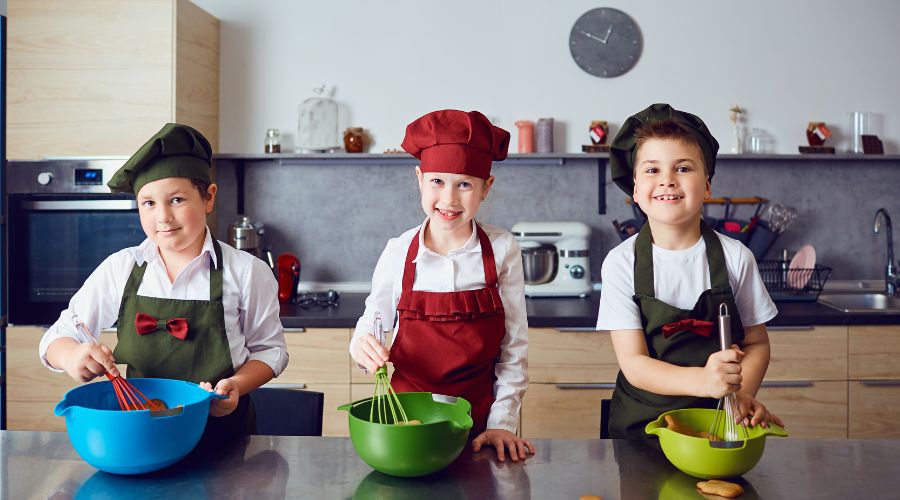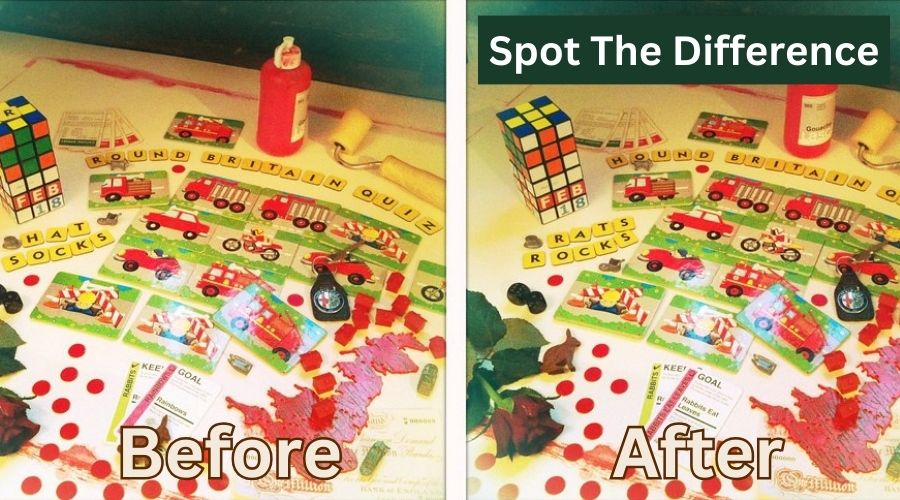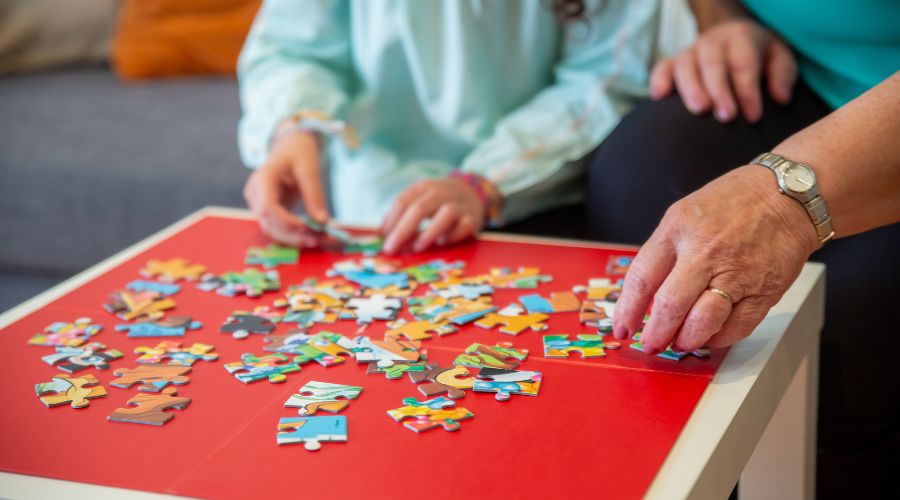Are you looking for activities to keep your little ones learning new things while having fun? Don’t worry, you’ve landed in the perfect spot! In this age of technology and constant distractions, finding engaging and educational activities for children can be a challenge. However, with the right guidance and a bit of creativity, you can turn every moment into a learning opportunity. Whether you’re a parent, teacher, or carer, this guide is here to help you discover a wide range of activities that will not only keep your little ones entertained but also foster their development and curiosity. Children love participating in learning activities for hours, especially when they involve hands-on experiments, interactive playtime, and problem-solving. In this blog post, we are going to list the activities that not only keep kids engaged but will also help them learn effectively.
Factors To Keep In Mind Before Choosing Learning Activities
Before we get into the exciting learning activities, let’s consider some important factors to keep in mind when selecting activities for your children.
- Learning Objectives- Consider the areas of learning that the activity will affect. Is it cognitive growth, motor abilities, or creativity that is important? It is critical to comprehend the learning impact.
- Necessary Tools and Props- What supplies or equipment are needed to effectively lead the activity? To guarantee a smooth experience, collect these in advance.
- Parental Involvement- Choose whether to engage in active play with your child or to let them explore and solve problems on their own. While self-discovery is encouraged in some hobbies, instruction can be helpful in others.
- Prompts and Guidance- Consider what suggestions and directions you should provide to help your youngster through the task. Giving tips or asking questions can stimulate critical thinking and problem-solving.
- Sensory Engagement- Investigate the activity’s sensory features. Consider which senses are being stimulated, such as touch, sight, or hearing. Understanding this contributes to a more rewarding learning experience.
1. Sorting Blocks

Building blocks are an excellent tool for introducing children to new concepts in an enjoyable and straightforward manner. These colourful blocks come in various shapes and sizes, making them perfect for helping children differentiate between shapes and colours. Not only is this activity fun, but it also promotes cognitive development and fine motor skills. What’s more, it’s easy to set up and requires minimal materials, making it a convenient and engaging learning activity for kids.
- How To Do It
Begin by gathering a collection of building blocks in different shapes and colours, ensuring they are safe for your child’s age. Sit down with your child and explain the activity. You can ask them to sort the blocks in various ways, such as by shape, colour, or size. Engage with your child by asking questions and providing positive reinforcement during the sorting process. After sorting, encourage your child to get creative and build something fun with the sorted blocks.
- Benefits
This activity offers a range of benefits, including cognitive skill development as children learn to classify and organise objects. Sorting by colour and shape enhances their recognition of these attributes. Handling and sorting the blocks also improves fine motor skills, which are essential for tasks like writing. Moreover, building with sorted blocks encourages imaginative play and creativity.
- Tips
To make it more exciting, turn sorting into a game by timing how fast your child can complete the task, introducing an element of friendly competition. Use words like bigger, smaller, more, and less, etc. to introduce basic math concepts. Keep the activity fresh by introducing new shapes and colours or even incorporating patterns as your child becomes more proficient.
2. Shape It With Playdough

Playing with playdough is a delightful and sensory-rich activity that provides both satisfaction and education for 4 to 5-year-olds. Children are able to explore different shapes and use their sense of touch in this hands-on activity. By moulding different shapes using playdough, they can gain a deeper understanding of geometric concepts. As visual guidance, a sheet with images of different types is provided to make this task more enjoyable.
- How To Do It
Gather playdough in various colours and a sheet with images of shapes. Start by introducing the concept of shapes and explaining their names and characteristics. Encourage your child to select a shape from the sheet and mould it with playdough, reinforcing their learning by asking questions. After working through the sheet, allow creative play, where children can use playdough to create their own shapes and objects, enhancing their understanding of geometry.
- Benefits
Playing with playdough offers several advantages. It engages the senses, providing a tactile and visual experience that enhances learning. Children develop the ability to recognise and distinguish between different shapes. Moulding shapes with playdough improves fine motor skills, crucial for tasks like writing. Allowing kids to create their own shapes and objects fosters imaginative play.
- Tips
Patience is key, and encouraging experimentation with different shapes and colours is beneficial. Use open-ended questions to stimulate critical thinking, and incorporate various textured materials for a multisensory experience, such as adding beads to the playdough for a textured effect.
3. Read Books Together

There aren’t many things that are as enjoyable and instructive for kids as reading books together. Every narrative, whether it’s found in a rhythmic poem, an educational pop-up book, or a wonderfully designed picture book, opens a child’s imagination and sparks their universe. Reading to your child is a study of knowledge and stories, not just a basic task.
- How To Do It
Begin by curating a diverse collection of books that cater to your child’s age and interests. Create a cosy reading nook with comfortable cushions and dedicated lighting to make the experience even more inviting. Engage your child by asking questions about the story and encouraging them to share their thoughts. Actively involve your child in reading, allowing them to read sentences or words, boosting their confidence. Regular visits to the library can foster their independence and cater to their unique interests.
- Benefits
The benefits of reading together are manifold. It enhances language development by exposing children to a rich vocabulary and communication skills. It also contributes to cognitive development by improving memory, concentration, and critical thinking. Reading sparks creativity and imagination, while the bonding time shared between you and your child creates lasting memories and nurtures a lifelong love of reading.
- Tips
Be patient as your child explores each book, taking time to appreciate the illustrations and immerse themselves in the story. Maintain a reading routine to ensure that it becomes a consistent and enjoyable part of their day. As your child grows, transition to more complex stories that challenge their reading skills while continuing to nurture their love for books.
4. Baking & Cooking Together

Cooking together with your child is a fun way to explain mathematical ideas in a delicious way. This practical activity combines math and food, whether it’s calculating pizza toppings or counting eggs for a cake. Getting your kids involved in baking and cooking is not only a fun pastime, but it’s also a great way to improve their math comprehension of addition, quantities, multiplication, measurements, and other concepts. It’s a voyage that satisfies palates and develops young brains.
- How To Do It
Start by picking kid-friendly recipes like cookies or pizza. While gathering ingredients, let your child count eggs, measure flour, and chat about fractions in the recipe. Encourage them to get hands-on by helping with measurements and understanding volume. As you cook, discuss the math behind it, like multiplying a recipe or dividing pizza into slices. And the best part? Enjoying the delicious creations you’ve made together, all while learning.
- Benefits
Cooking and baking provide a range of benefits, including enhancing math skills in areas like addition, subtraction, multiplication, division, and measurement comprehension. It offers a practical application of mathematical concepts, enabling children to see the real-world relevance of their classroom learning. Additionally, the hands-on nature of the activity improves fine motor skills, and successfully following a recipe can boost a child’s confidence.
- Tips
Start with straightforward recipes and progress to more complex ones as your child’s skills and confidence grow. Introduce math-oriented challenges to keep things interesting, such as doubling a recipe or adjusting ingredient proportions. Always emphasise safety in the kitchen and involve your child in age-appropriate tasks under supervision.
5. Journalling The Day & Feelings

Encouraging children to journal offers a range of benefits, much like it does for adults. This simple activity, requiring minimal resources, can help kids develop their writing and thinking skills. Their journal becomes a safe space where they can write about their day, draw, and let their creativity soar. This peaceful and reflective time encourages self-expression and intuitive thinking, nurtures emotional intelligence and fosters creativity.
- How To Do It
Choose a journal that appeals to your child, allowing them to personalise it with stickers or drawings. Make journaling a daily routine, perhaps just before bedtime. In the journal, they can record their day, express their feelings, or simply let their imagination flow. Encourage them with prompts, like writing about their favourite part of the day or drawing something that made them happy. Periodically, review and reflect on their journal together to have meaningful conversations.
- The Benefits
Journaling enhances writing skills and sparks creativity, whether through storytelling or drawing. It provides an outlet for self-expression, helping children convey their thoughts, feelings, and experiences, which, in turn, strengthens their emotional intelligence. Moreover, reflecting on their day promotes critical thinking, problem-solving, and intuitive reasoning. The quiet, focused nature of journaling can also offer a calming break, helping to reduce stress and anxiety.
- Tips
Find a balance between consistency and flexibility, recognising that some days you may see more words while others feature drawings. Respect your child’s privacy by allowing them to keep certain entries private. Lastly, celebrate their progress and creativity by highlighting their favourite entries or drawings.
6. Dressing Up

Dressing up isn’t just a child’s play; it’s a constructive activity that enables kids to practise dressing themselves independently. It’s an opportunity for parents to provide guidance, especially with tricky fasteners like zips and buttons. But beyond practical dressing, this activity is a canvas for children’s creativity. They can use everyday items like pillowcases, blankets, and sheets to fashion unique gowns and outfits, and then top it off with a grand fashion show for the grown-ups, merging independence and imagination into one delightful experience.
- How To Do It
Create a dress-up wardrobe filled with various clothing, accessories, and props, including old clothes, scarves, and hats. Encourage your child to choose their outfits and dress themselves. Provide guidance for tricky fastenings while fostering their dressing skills. Beyond regular clothing, offer materials like pillowcases, blankets, or sheets to fuel imaginative play. Once they’re all decked out, host a fashion show where they can showcase their creative ensembles.
- Benefits
Dressing up offers several advantages, starting with the promotion of independence and self-sufficiency. It also enhances fine motor skills as children navigate buttons, zips, and accessories. The use of various materials encourages imaginative play and creativity while hosting a fashion show or dressing up overall boosts a child’s self-confidence.
- Tips
To maximise the experience, provide a diverse range of clothing and accessories that can inspire creative combinations. Be patient and offer help with tricky fasteners when needed. Encourage your child to narrate stories or scenarios as they dress up, further fueling their imaginative play.
7. Gardening

Gardening offers your 4 to 5-year-olds an educational and joyful experience that connects them with science and nature. By nurturing their own plants, children acquire new skills while developing a profound understanding of life and the environment. Involving your child in gardening activities, such as watering, weeding, planting, and observing, not only imparts responsibility but also instills a sense of compassion for the natural world around them.
- How To Do It
Start by choosing age-appropriate plants and making sure they’re easy to grow. Engage your child in the various aspects of gardening, from sowing seeds and planting saplings to tending to the plants. Explain the science behind plant growth and foster a sense of curiosity and understanding. Regular tasks like watering and weeding become part of your child’s routine, and the joy of harvesting and tasting the fruits of their labour can be a memorable experience.
- Benefits
Gardening is an educational journey that enriches children’s knowledge of botany, biology, and the environment. It nurtures responsibility, fosters a connection to nature, and imparts vital life skills such as patience and observation.
- Tips
Make a kid-friendly garden area where they can customise their gardening tools. To stimulate their curiosity and foster an inquiring mindset, ask questions and show curiosity.
8. Spot The Difference

The “Spot the Difference” activity is a fantastic way to improve your child’s concentration and observation skills while making learning an enjoyable experience. This game involves minimal materials, providing a perfect blend of fun and education. By using everyday objects such as erasers, mugs, pencils, notebooks, flowers, crayons, rocks, and toys, you can play a game that enhances your child’s memory and sharpens their powers of observation.
- How To Do It
Start by assembling a selection of common items and placing them on a table. Invite your child to carefully examine these items. Then, have them close their eyes and turn away from the table. While their eyes are closed, quietly remove a few items from the table. Ask your child to open their eyes, look at the table again, and challenge them to identify the missing items.
- Benefits
“Spot the Difference” offers several advantages. It strengthens your child’s concentration and focus as they pay attention to detail. Their memory also gets a boost as they recall the items originally on the table. Moreover, this game sharpens their observational skills, which are essential for life.
- Tips
Begin with a small number of items, gradually increasing the complexity as your child becomes more skilled. Add an element of challenge by timing their observation and identification. Encourage your child to explain how they identified the missing items, enhancing their communication skills.
9. Board Games

Board games provide a fantastic way to spend quality time with your kids while also honing their skills. Games like Monopoly, Scrabble, and Chess offer an engaging blend of fun and learning. They help enhance numeracy skills, boost social interactions, and encourage recognition and strategic thinking. For instance, Monopoly introduces children to the world of commerce and economics, teaching them about managing money, making investments, and strategic decision-making. Chess, the game of kings, encourages strategic thinking and planning, empowering children to anticipate moves and cultivate patience.
- How To Do It
Select age-appropriate games that match your child’s interests. Set up the game and explain the rules, involving your child in the process. Enjoy the game together, emphasising fun, communication, and fairness. Throughout the game, highlight the skills being developed, such as strategy, vocabulary, and numeracy.
- Benefits
Board games offer a range of benefits. They improve numeracy skills by involving counting and strategic thinking. Social skills, cooperation, and sportsmanship are nurtured through gameplay. Recognition skills are sharpened as games encourage word or pattern recognition, and critical thinking is stimulated, making learning both enjoyable and educational.
- Tips
Choose games tailored to your child’s age and interests to keep them engaged. Use board games to teach valuable life lessons about winning and losing gracefully. Make the most of the learning opportunities provided by games by discussing strategies, new words, or mathematical concepts during play.
10. Jigsaw Puzzles

Jigsaw puzzles are instructional tools that engage young brains and improve their cognitive skills, more so than just being a source of entertainment. These puzzles, which come in a variety of difficulty levels, are both very entertaining and help develop important skills. Jigsaw puzzles are a great tool to help kids of all ages develop their problem-solving, patience, and pattern-recognition skills because of their complex designs and vibrant pieces.
- How To Do It
Choose a puzzle that is appropriate for your child’s age and ability level before beginning this exercise. Set aside an area for assembling puzzles that have good lighting and a level surface. As you assist your child in sorting the pieces by inner sections and edges, you are teaching them the value of organisation. Assemble the puzzle’s edge pieces first, as this will lay the groundwork for comprehending its borders. To help your child organise the pieces into more manageable groups, encourage them to use similar colours and patterns. As you put the puzzle together, pay close attention to how the colours, patterns, and forms match.
- Benefits
Jigsaw puzzles offer an array of advantages, including enhanced cognitive development, improved problem-solving skills, memory, and spatial awareness. They also bolster fine motor skills and hand-eye coordination. The process of completing a puzzle instills patience and resilience in children, teaching them the value of persistence and hard work. Pattern recognition is another valuable skill sharpened through jigsaw puzzles.
- Tips
Give your child advice and assistance when they run into difficulties while they solve puzzles, as this will help them learn important problem-solving skills. Encourage teamwork, build the parent-child link, and work on puzzles together to make puzzle time a collaborative endeavour. To provide your youngster with a constant challenge as their skills develop, progressively increase the problems’ difficulty. To give them more self-confidence and motivation, teach your kids to applaud all of their accomplishments, no matter how little.
Conclusion
The fun activities listed above offer a wealth of engaging opportunities for your child’s growth and development. These activities are not just about play; they are about learning through play. From enhancing numeracy and problem-solving skills to nurturing social interactions and patience, each of these activities contributes to your child’s holistic development. Moreover, they demand minimal equipment and offer valuable moments for quality family time and bonding. So, if you’re seeking fun and engaging activities for your 4 to 5-year-old, consider the options listed above. Each choice offers a chance for your child to learn, grow, and create lasting memories during your time together.

